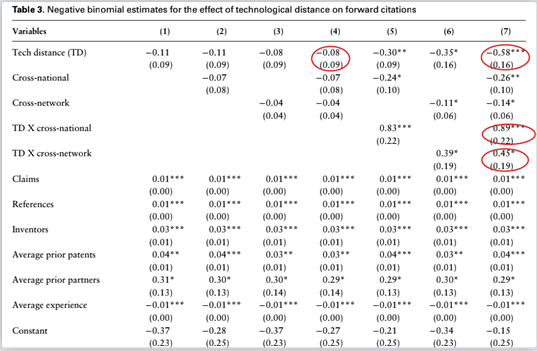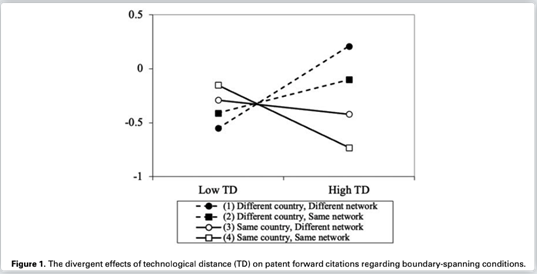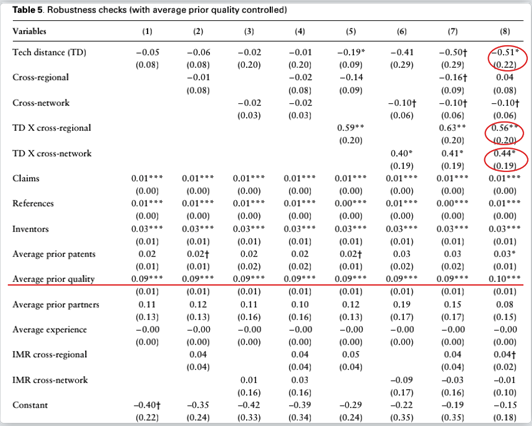On 9 December 2021 from 11:30-13:00, the 5th edition of the Xi Xian "Innovation Cloud Forum", co-organised by the IIDPF and the Centre for Science and Technology Strategy and Policy Research, affiliated with the Ministry of Education and the Ministry of Science and Technology, was held online as scheduled. Prof. Huo Dong, Associate Professor and Deputy Secretary of the Party Committee of the School of Economics and Management of Harbin Institute of Technology (Shenzhen), was the guest speaker at this edition of the Xixian "Innovation Cloud Forum", presenting a lecture entitled "Local Search or Cross-border? The impact of technological distance between enterprises on collaborative innovation". The forum was chaired by Professor Zeng Jingjing, Director of the Center for Science and Technology Strategy and Policy Research. More than 100 teachers and students from several universities, including Harbin Institute of Technology, Wuhan University, Huazhong University of Science and Technology, and ZUEL, participated in the academic forum online.
  Professor Huo Dong's presentation is based on his paper Local search or beyond? The influence of interfirm technological distance on co-innovation success published in Industrial and Corporate Change in 2021. The influence of interfirm technological distance on co-innovation success". The presentation is divided into 5 parts: Introduction, Theory, Method, Results, Discussion and Conclusion.
  In the introduction section, Professor Huo Dong first identifies the advantages and disadvantages of activities that cross organisational boundaries. The advantages are that the relational perspective emphasises the importance of partnerships in enhancing competitive advantage (Dyer & Singh, 1998) and that inter-firm reorganisation of technological knowledge particularly promotes innovation (Kogut & Zander, 1992); the disadvantages are that cross-organisational activities can lead to uncertainty in the innovation process and greater risk of co-invention. Secondly, the current focus on corporate innovation or joint innovation activities is mostly at the local search level, due to underlying factors such as technology (Stuart and Podolny, 1996), geographical location (Jaffe et al., 1993) and social relationships (Madhok, 2006), but recent research has also shown that However, recent research has also shown that innovation activities that go beyond local search, beyond the relational boundaries of technology, geography and society, can also be beneficial. For example, technological diversity is associated with innovation performance in an inverted U-shape when firms of different technological types collaborate (Sampson, 2007).
  The research question for this study, based on the above research background, is what are the two sides of local search/knowledge search across boundaries and how do they act and influence the success of inter-firm innovation activities.
  In explaining the duality of local search/knowledge search across boundaries, Professor Huidong's research chose to use inter-firm technological distance (TD) and the conditions for its application as an entry point, focusing on the performance or success of each co-invention as a co-innovation between firms. TD was chosen as the entry point because it measures cognitive differences, i.e. the extent to which two firms transcend the same technological boundary, and cognitive distance can directly influence the learning process and innovation. Geographical and social boundaries, on the other hand, are two conditions that indirectly determine the success of an innovation.
  This study considers that the collaborative innovation process consists of two aspects: learning and creation. The duality of technological distance on collaborative innovation is also manifested in a decrease in the learning effect and an increase in the creation effect. On the one hand, technological similarity or overlap (small technological distance) increases the knowledge absorption capacity of one firm accessing and absorbing the partner firm's technology (Dyer & Singh, 1998; Mowery et al., 1996). On the other hand, diverse technological knowledge from different partner firms (large technological distance) creates synergies that greatly increase the opportunities for combining different technologies, and the value of the new technologies created can be higher than the simple sum of the value of the technologies created by all partners based on their respective endowments (Dyer & Singh, 1998; Grant & Baden-Fuller, 1995). 1995).
  Partnerships across regions and social networks also affect the innovation process (complementary effects). First, geographical and social proximity facilitates the establishment of trusting and normative inter-organisational learning environments, so that collaboration across regional and social relationships can cause a reduction in learning effects. This is particularly important for cognitively distant partners, who rely more on interactions to acquire, assimilate, transform and utilise external knowledge from partners, while factors of geography and social relations influence interactions between partners. Secondly, the specific knowledge acquired from different regions or social networks contributes to an enhanced creative effect, i.e. the geographical and social attributes of the technical knowledge available in co-inventions become more diverse, allowing for increased variation and selection, resulting in high quality technical outputs.
  In the Theory section, Professor Huodong put forward four research hypotheses: P1 the decrease in the learning effect and the increase in the creation effect will cancel each other out and eventually become insignificant; P2 the positive increase in the creation effect exceeds the negative increase in the learning effect; P3 the negative increase in the learning effect exceeds the positive increase in the creation effect; P4 the learning effect and the creation effect have an interactive effect, showing an inverted U-shaped trend.

  (This image was obtained from Professor Huo Dong's paper Local search or beyond? The influence of interfirm technological distance on co-innovation success)
  The data for this study was obtained from patents for inventions issued by the United States Patent and Trademark Office (USPTO) from 1993-2002 and focused the sample on patents jointly invented by two assignees (companies), with the final sample containing 18,575 joint inventions (patents) created by 6595 companies between 1993 and 2002. The dependent variable for the study was Forward citations, which is the number of all positive citations to the observed patents over a five-year period; the independent variable was Technological distance, which is the cosine of the technology portfolio of the two companies, calculated as:

  (This image was obtained from Professor Huo Dong's paper Local search or beyond? The influence of interfirm technological distance on co-innovation success)
  The two moderating variables in this study: Cross-regional, i.e. cross-national, cross-continental or geodesic distance; and Cross-network, i.e. if in the last 5 years there was a relationship between two co-inventing firms with The control variables for this study included: Claims, References, Inventors, Average prior patents, Average prior partners, Average experience, Average experience, Average experience, Average experience, Average experience, Average experience, Average experience, Average experience, Average experience, Average experience. The method used for the study was negative binomial regression.

  (This image was obtained from Professor Huo Dong's paper Local search or beyond? The influence of interfirm technological distance on co-innovation success)
  The results are shown above, with estimates of technical distance in models (1)-(4) consistently insignificant (P>0.10), supporting P1. In models (5)-(7), estimates of technical distance become statistically significant and negative when interaction terms are included (β=-0.58, P<0.001), and both interaction terms are statistically significant and positive (β=0.89, P< 0.001; β=0.45, p<0.05). This suggests that the net effect of technological distance depends on cross-country and cross-network partnerships.
  The final conclusion is therefore as shown in the figure below, the positive growth of the creation effect exceeds the negative growth of the learning effect in the case of different networks in different countries (1), supporting Prediction 2, which indicates that as technological distance increases it significantly favours positive citation of patents; in the case of the same network in the same country, the negative growth of the learning effect exceeds the positive growth of the creation effect (4), supporting Prediction 3, which indicates that technological distance increases and significantly reduces positive citation of patents. Prediction 1 is supported by the negative increase in the learning effect, which exceeds the positive increase in the creation effect (4), suggesting that an increase in technological distance significantly reduces the positive citation of patents; while in the case of the same network in different countries and different networks in the same country (2)(3), the two effects cancel each other out, supporting prediction 1.

  (This image was obtained from Professor Huo Dong's paper Local search or beyond? The influence of interfirm technological distance on co-innovation success)
  To exclude the potential effects of selection bias regarding macroeconomic characteristics of firms, measures of region of interest, and the endogeneity of unobserved innovation capabilities of firms of interest, Professor Huo Dong conducted several robustness tests. The first robustness test is the selection bias of firms' partners with respect to macroeconomic characteristics, where certain firms have preferences in partner selection in terms of geography, social ties, technology level, R&D expenditures, etc. The first robustness test is the selection bias of firms' partners with respect to macroeconomic characteristics. Therefore, Professor Huo Dong selected data from the Organisation for Economic Co-operation and Development (OECD) on macroeconomic characteristics such as national gross domestic product (GDP), total domestic R&D expenditure (GERD), total corporate R&D expenditure (BERD) and foreign direct investment (FDI), averaged their statistics, and included dummy variables to predict cross-country partnerships through Probit (based on the assumption that the two moderating variables are independent) and Biprobit models (based on the assumption that the two moderating variables are not independent). In addition to this, the inclusion and absence of OECD data was also used as one of the robustness tests. The final results of this robustness test are consistent with the previous analysis and ensure the robustness of the results. The second robustness test addresses the issue of selective measurement of regions. Professor Huidong used cross-continental and geodesic distance as proxies to check the robustness of the results at different geographical scales. The final results are also robust.
  The third robustness test addresses the endogeneity of a firm's innovation capacity, i.e. controlling for average existing patents, average existing partners and average existing experience alone may not be sufficient to address the endogeneity problem posed by a firm's unobservable innovation capacity (Hamilton and Nickerson, 2003). Since unobserved heterogeneity in firms producing high/low quality patents can affect cross-border activity and co-invention quality, Professor Huo Dong added an additional control variable, average quality, to the choice model and the main model, following the Pre-sample Mean approach (Blundellet al., 2002). The results are shown below and the robustness test results are consistent with the previous section. However, it was found that the effects of average existing patents, average existing partners and average existing experience on forward patent citations weakened and became insignificant when average quality was controlled for.

  (This image was obtained from Professor Huo Dong's paper Local search or beyond? The influence of interfirm technological distance on co-innovation success)
  To conclude, the conclusion of this study is that the relationship between technological distance (TD) and innovation depends on the extent to which the partners cross regional or social boundaries. When a single border is crossed, the learning and creation effects cancel each other out and the effect of technological distance on innovation is not significant; when a double border is crossed, the impact of the creation effect is greater than the impact of the learning effect and technological distance will stimulate high-quality innovation; when a double border is localised, the learning effect is greater than the creation effect and technological distance will be detrimental to collaborative innovation. The interaction effect of the learning effect and the creation effect (inverted U-shape) is not reflected.
  This study contributes by: 1. elucidating how the process of crossing technical (or cognitive) boundaries is influenced by crossing geographical and social boundaries in the context of creative activity across organisational boundaries; 2. providing a more detailed theoretical analysis of the co-innovation process by focusing on the quality of each specific co-invention; 3. theoretically elucidating two opposing mechanisms of action in the co-innovation process that determine the success of co-innovation. The learning effect and the creation effect; 4. Rigorous empirical tests based on patents provide sufficient evidence to help further deepen the understanding of the academic community on local versus cross-border search.
  Professor Huo Dong also presented some of the discussion-worthy aspects of the study: 1. Why the positive net effect of technological distance in the cross-border condition is unlikely to be attributable to improved learning. This is because crossing geographical and social boundaries logically widens rather than shortens cognitive differences, leading to problems of mistrust between firms. Instead, it is logical to attribute the positive net effect to enhanced creativity, since creativity would enrich portfolio opportunities (i.e. variability) and reinforce selection decisions for innovation (i.e. selectivity).2. Why is the positive reinforcement of the creativity effect greater than the negative reinforcement of the learning effect in the context of cross-regional and cross-network partnerships? Because the general absorptive capacity of co-inventing firms is likely to be greater in cross-border partnerships, which allows them to overcome the barriers posed by cross-border partnerships. Furthermore, the creation of opportunities for reorganisation is crucial in creative activities.3. On the issue of no inverted U-shaped effects. A reduction in learning effects may be task-related rather than relationship-related. Otherwise, the latter is more likely to undermine trust in the collaboration and to have a negative impact on knowledge creation mechanisms.
  The limitations of this study include, first, the potential bias of using patents to measure a company's technological base. Second, performance as an end result is often the result of more than one antecedent mechanism, so the current treatment of endogeneity has limitations. And lastly, results may differ when examining innovations related to other purposes such as products, services and marketing. After the opposite two potential effects cancel each other out, the net effect may depend on whether the project of collaborative innovation is itself learning-intensive or creativity-intensive.
  Despite these limitations, the findings of the current study are still significant. First, management has traditionally been considered to be very dependent on communication (Zack, 1993), but many of the current advanced means of communication technology have made this shortcoming possibly less important. Second, research findings suggest that the success of collaborative innovation depends more on developing new opportunities than on overcoming uncertainty. Firms should therefore focus more on continuously developing and strengthening their unique innovative capabilities and competitiveness (i.e. building on their strengths) rather than homogenising with other firms in order to avoid risk (i.e. avoiding their weaknesses).
  The lecture was successfully concluded.
